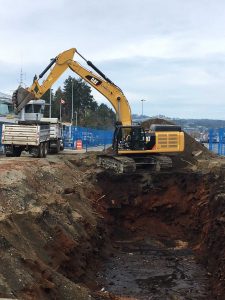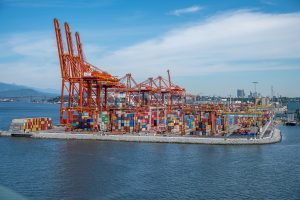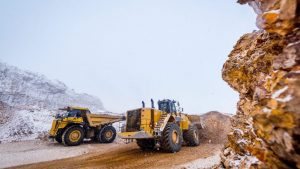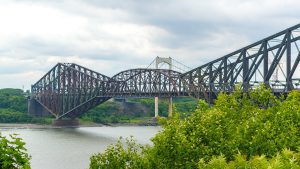Unusual excavation work is taking place in the port city of Nanaimo, B.C. At BC Ferries Departure Bay terminal, 27,000 cubic metres of wood waste is being removed from the holding compound, which is the area where vehicles wait before boarding ferries bound for Vancouver.

What makes the $6 million project so odd is that the log pieces, bark, sawdust and other wood materials being trucked away come from a defunct sawmill that was at the site.
“This is rare,” said Shane Scroggie, BC Ferries project manager for terminal construction. “We’ve never had to remediate at such a unique site.”
As he explains it, a sawmill that operated until sometime in the 1940s was at the location, near an estuary, which later disappeared as it got filled with wood waste.
In the 1960s, as ferry traffic grew, the holding compound had to get bigger.
“For whatever reason, when Departure Bay expanded, a one-metre layer of road base was layered over the wood waste,” Scroggie said. It was then topped with asphalt.
The capping solution worked well until a decade ago. As settling progressed, random areas began to undulate and ripple. Filling in and repaving took place wherever indentations appeared. But by 2008, a roughly 100-square-metre area of the parking area had to be dug to a six-metre depth for full repair due to major settling.
“We found beautiful, clean sawdust and chunks of wood,” Scroggie said.
Taking one month, at a $500,000 cost, it became apparent that other areas would eventually need fixing.
In February 2017, Scroggie launched environmental and geo-technical studies to determine how much material needed to be removed and how deep the wood waste was. Depths ranged from three to six metres.
As well, because the site borders the Salish Sea/Georgia Strait, historic First Nations settlements were known to exist in the area.
Ongoing archeological site inspections are part of the job. To date, no artifacts have been found at the project, which encompasses a 9,100-square-metre area.
One surprise was the discovery of coal, up to one metre deep in places, under the wood waste. Nanaimo got its start in the mid-1850s as a coal-mining town where the industry operated for 100 years. The coal will be left in place, Scroggie said.
Work started in October with Nanaimo-based Windley Contracting the successful bidder. Scroggie anticipates the mid-May completion date, prior to the busy long weekend, will be achieved despite the curveballs.
“The work is definitely a challenge,” he said.
Environmental testing determined the wood waste was contaminated by a combination of sodium and chloride from sea water that had percolated into the site during daily high tides.
The thought the wood could be burned wasn’t feasible because it was so moist. Instead, it’s being trucked to a Nanaimo company where leachate ponds will collect the runoff. The Ministry of Environment is involved in the disposal process, Scroggie said.
Additionally, it’s crucial to keep ferry traffic moving at the busy terminal, so the project is being done in four phases to avoid disruptions.
“We fence off one area, excavate it and back fill it in a continual rotation through the site,” Scroggie explained.
A crew of 10, using two excavators, a back hoe and drum roller as well as a BC Ferries site supervisor, are at Departure Bay.
Beyond removing the more than 70-year-old wood leftovers, asphalt and concrete, Windley is dealing with tricky excavations. Because the wood waste was settling, the underground drain system was also settling and not working well.
In addition to installing new sanitary sewer and storm drain systems, the underground electrical system has to be replaced.
Landscaping, new sidewalks, curbs and fencing are also part of the job.
Scroggie notes despite the rather unusual job, customer complaints haven’t been logged.
“We’ve given lots of pre-warning,” he said of the big wood dig.











Recent Comments